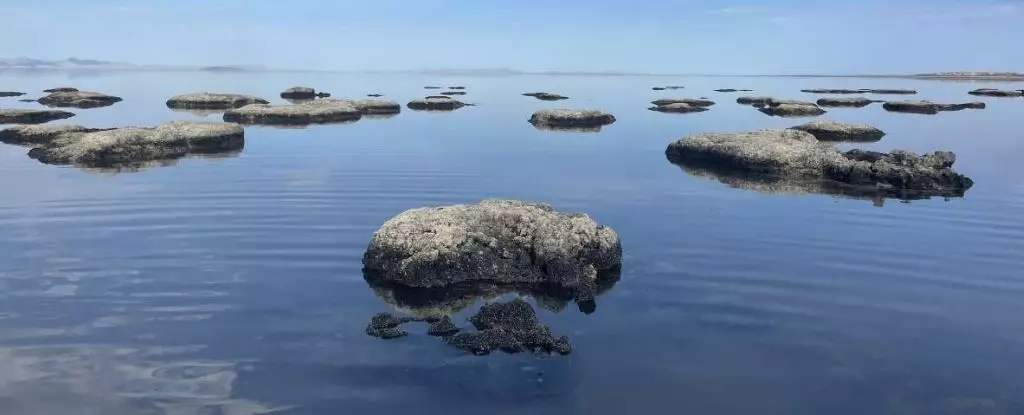The Great Salt Lake in the United States, known for its extreme salinity, was previously believed to only be home to brine shrimp and brine flies. However, researchers from the University of Utah have recently made a groundbreaking discovery. By breaking apart microscopic mud structures called microbialites, scientists have uncovered the presence of worms living below the lake’s surface, marking the first time nematodes have been found in such a saline environment. This revelation challenges the existing understanding of the lake’s ecosystem and showcases the resilience and adaptability of these organisms.
Biologists Julie Jung and Michael Werner spearheaded the exploration that led to the identification of these hidden worms in the Great Salt Lake. Despite previous failed attempts by other researchers, Jung and Werner utilized innovative techniques to extract and analyze samples from the lake bed. Their persistence paid off as live nematodes were discovered in all the sites where samples were collected. This discovery sheds light on the diverse range of life forms that can thrive in extreme environments and highlights the importance of continued exploration and research in understanding our natural world.
The newfound nematodes in the Great Salt Lake have adapted to survive on a diet of bacteria that live within microbial mats on the lake bed. Through laboratory experiments using a well-known roundworm species, researchers were able to demonstrate the unique ability of these worms to withstand highly saline conditions. The results suggest that these worms have evolved specific mechanisms to thrive in their harsh environment, providing valuable insights into their survival strategies and biological adaptations.
While the discovery of these hidden worms is a significant scientific achievement, the Great Salt Lake itself faces an uncertain future. As human activities and climate change continue to impact the lake’s ecosystem, the delicate balance of life within it is at risk. The shrinking water levels, increasing salinity, and exposure of microbial mats to environmental stressors threaten the survival of the unique species that call the lake home. Researchers emphasize the urgent need for conservation efforts and further study to protect this fragile ecosystem and its inhabitants.
The revelation of nematodes thriving in the extreme conditions of the Great Salt Lake is a testament to the resilience and adaptability of life on Earth. This discovery underscores the importance of continued exploration and scientific research in uncovering the hidden wonders of our natural world. As we strive to understand and preserve unique ecosystems like the Great Salt Lake, we are reminded of the delicate balance that exists in the intricate web of life on our planet.


Leave a Reply